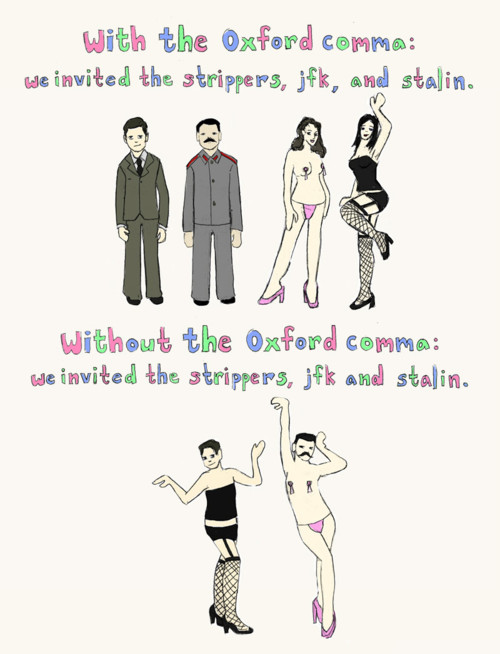Grammar
Comma use
When and where to use a comma in an English language text can cause confusion for even the most confident English speaker. Commas are a necessary part of writing in English. They allow the writer to combine ideas and information, insert pauses, and differentiate between elements in a sentence.
The following covers the most common comma rules and examples that you will encounter. If you are wondering about comma use when joining sentences together, refer to chapter x's grammar section on conjunctions and transition words.
The table below outlines the different topics involving comma use dealt with in this section. Click on a topic to find out when and how you need to use commas.
Curious about commas?
| Lists The Captain can speak English, Dutch, and Norwegian. |
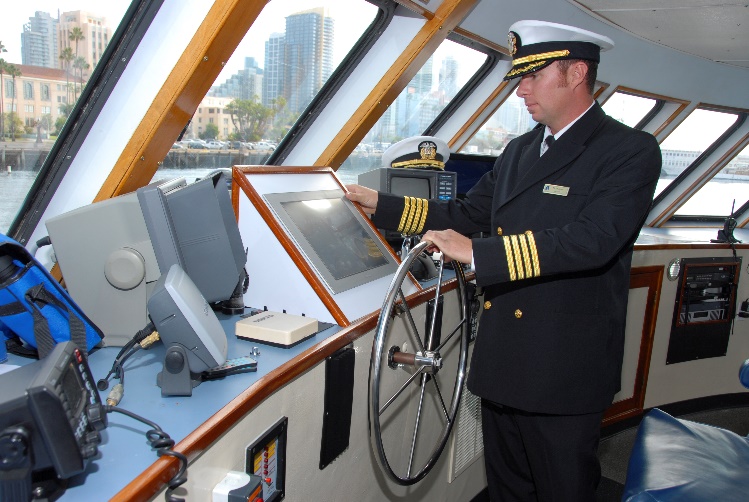 |
| Extra information Sailing in busy ports, like the Port of Hong Kong, requires effective communication. |
 |
| Numbers and dates This professional exchange between naval officers took place on October 30, 2009. |
 |
| Conditional sentences If the ship were to encounter heavy weather, the cargo should remain secure. |
 |
| Subordinating conjunctions and prepositional phrases at the beginning of a sentence While sailing off the coast of Somalia, MV Faina was hijacked by pirates. |
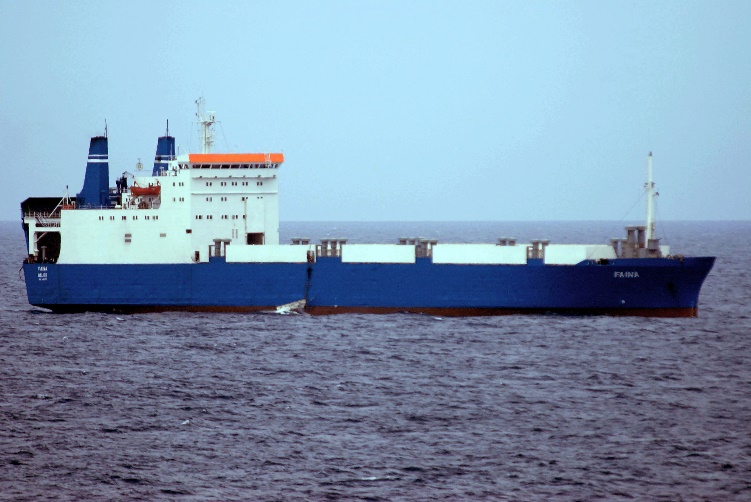 |
| Direct speech >«We need to perform a spot-check in the engine room, Tony.» |
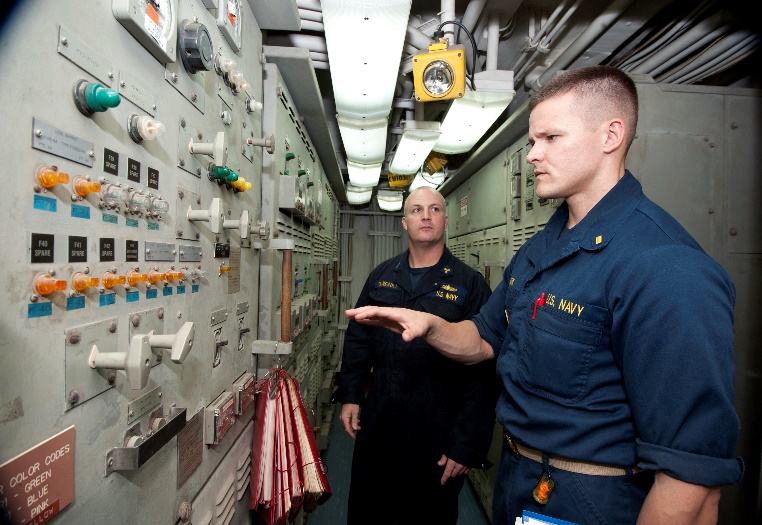 |
| Place names San Francisco, California is home to a large port facility. |
 |
Lists
Commas are needed when making a list of more than two things or actions. Notice in the examples below that the commas are placed after each item in the list.
Examples
- The Captain, Bosun, and First mate attended the meeting.
- She excelled at running, swimming, and singing.
- The cargo was comprised of wine, fruit, and shrimp.
- He ran, biked, and climbed to prepare for his marathon.
The Oxford comma
The Oxford comma
There are different approaches to comma use when listing things in a sentence. Using a comma before the coordinating conjunction (i.e. and, or, but) as you see in the examples above is commonly known as the Oxford comma. Others refer to the comma as the serial comma or the Harvard comma, and its use and purpose are heavily debated. Consider the picture below- how does comma placement affect the reader's understanding of the sentence? Watch out this Ted-Ed video to find out more!
Image courtsey of The Gloss
Coordinate adjectives
Commas can also be used to separate two adjectives describing the same noun (coordinate adjectives).
Examples
- The vessel Pacific Rim is a large, ancient tanker.
- Hong Kong is home to a gigantic, modernized port.
Extra information
A comma or commas should be used when you add extra non-essential information to a sentence.
Examples
- The Captain disliked sailing through the Strait of Malacca, a heavily trafficked fairway.
The phrase heavily trafficked fairway gives you additional information about the Strait of Malacca, but it is not essential in helping the reader understand the sentence.
- The trawler, prone to listing during high winds, almost capsized near the shoal.
In this sentence, prone to listing during high winds gives you extra information about the trawler. As in the previous sentence, the meaning of the sentence can be understood without this phrase.
- Illegally discharging waste overboard, which is strictly regulated by MARPOL, can result in serious consequences, such as fines or prison sentences.
Read the sentence above without the information in bold. Does it still make sense? Commas allowed the writer to add extra information for the benefit of the reader.
Numbers and dates
Another problematic area for non-native English speakers (and many native English speakers!), is writing numbers and dates.
Numbers
Commas are typically used when writing numbers greater than 1,000. The comma divides the numerical expression and helps the reader to determine if the number in question is in the thousands, millions, or billions.
Examples
- One thousand: 1,000
- One million: 1,000,000
- One billion: 1,000,000,000
If you are familiar with the Norwegian numerical system, you might notice that the use of commas in numerical expressions is the exact opposite of what is done in Norwegian. In Norwegian, numbers 1,000 or more are written with a decimal point and not a comma. When writing numerical expressions in English that include fractions or monetary expressions that include cents, a decimal point must be used. This is the opposite how these expressions are written in Norwegian, where a comma is used to express fractions and cents/change.
Examples
0.05
0.25
$50.04
£10.20
Dates
Writing dates in English is not as complicated as one might think. British English dates are written much the same as Norwegian dates, with the exception of the name of the month, which is written in English. The British English way of date writing does not include a comma. However, American English dates require a comma as they feature the month before the day and the year. Below is a table with examples of how dates are written in both American and British English. Note that this is how dates should be written out in texts. When writing the date on a cover page or in the date section of a report, abbreviations can be used, e.g. dd.mm.yyyy, mm.dd.yyyy, dd-mm-yyyy, mm-dd-yyyy, dd/mm/yyyy, mm/dd/yyyy.
Examples
| British English | American English |
|---|---|
| 21 March 1984 | March 21, 1984 |
| 21st March 1984 | March 21st, 1984 |
| the 21st of March, 1984 | the 21st of March, 1984 |
| Wednesday, 21 March 1984 | Wednesday, March the 21st, 1984 |
| Wednesday the 21st of March, 1984 | Wednesday, March 21, 1984 |
The st you see after the number 21 refers to the date being the twenty-first. If you choose to write the date using an ordinal indicator, e.g. 21st, you must use the appropriate suffix.
Examples
- 21st - first
- 22nd - second
- 23rd – third
- 24th – fourth
How you write a date is often a stylistic choice. Ask your instructor which style you should use before choosing either the American or British English method, and remember to be consistent after you have chosen one or the other.
Conditional sentences
"If I finish reading Chapter 5, I can go out for a beer." Maybe you have said something like this to yourself at some point during the school year. This sentence presents you with a condition- if you do one thing, then another thing can be done or happen. If you start a sentence with a conditional If clause, you must use a comma.
Examples
– If the engine is not repaired by tomorrow, we will be behind schedule.
– If there is an oil spill, the environment could be irreparably damaged.
These kinds of sentences do not require a comma if they do not start with the if clause.
We will be behind schedule if the engine is not repaired by tomorrow.
The environment could be irreparably damaged if there is an oil spill.
Subordinating conjunctions and prepositional phrases at the beginning of a sentence
If you are wondering what a subordinating conjunction is or does, look no further than this very sentence. The subordinating conjunction "if" was used in the above sentence to turn two sentences into one.
Example
You are wondering what a subordinating conjunction is or does.
+
Look no further than this very sentence.
=
If you are wondering what a subordinating conjunction is or does, look no further than this very sentence.
Using "if", these two sentences are joined together. Notice how the sentence using "if" has a better flow than the two sentences on their own. Subordinating conjunctions are a useful tool in advanced writing in English.
Why are these called subordinating conjunctions? In the example above, "if" is used to turn one sentence into a subordinate clause. This in turn emphasizes the importance of the second sentence. Whenever you use a subordinating conjunction, you not only connecting ideas, but emphasizing them. Read in chapter x to find out about coordinating conjunctions which are used to connect to similar and equal ideas.
Look at the table below. These are examples of some of the most common subordinating conjunctions, many of which you have probably seen and heard before.
| Subordinating conjunction | Example |
|---|---|
| After | He eats dinner after he gets home from work. |
| Although | Although she is never sick, she often misses work. |
| As (as soon as, as long as) | I will call you as soon as I am home. |
| Because | The First Officer panicked because the Captain had fallen asleep. |
| Before | Clean your workstation before you leave. |
| During | During class, you cannot use your phone. |
| Even though | Even though you have a lot of experience, you can always learn new things. |
| If | If you miss work, you might be fired. |
| In order to | She must speak English in order to become an officer. |
| Since | Since the marine environment is vulnerable, we must prevent pollution. |
| Though | He has many friends though he is often homesick. |
| Unless | The expected date of arrival is tomorrow unless we encounter bad weather. |
| Until | Until an alternative is discovered, diesel fuel must still be used. |
| When | When working at heights, proper personal equipment is necessary. |
| Whenever | The crew is always excited whenever they reach a new port. |
| Wherever | Wherever you go, there you are. |
| While | While you are in class, it is important to concentrate. |
Look at the example sentences above. Some sentences have a comma and others do not. Are you able to recognize a pattern? Two "rules" should be apparent from the above examples:
- Sentences starting with a coordinating conjunction always use a comma at the end of the subordinate clause.
- Commas are never used before a subordinating conjunction if it appears in the middle of a sentence.
Some of the subordinating conjunctions above are also prepositions (before, after, until). When you start a sentence with a prepositional phrase, a comma is necessary. If you are unsure about the difference between a prepositional phrase and a subordinate clause, just remember that clauses have a subject and verb, and phrases do not. Another important thing to remember is that subordinating conjunctions join sentences together, and prepositions indicate a relationship between words and ideas in a sentence.
Direct speech
Commas are also used when indicating direct speech. This most often appears in literary texts when the author writes out dialogue. Reports that feature conversations might also write out direct speech. Direct speech and dialogue indicate that someone is being addressed or spoken to in the sentence.
Examples
- "Play it again, Sam."
- "We quit at noon on Fridays, right?"
- "I have had enough, Truls."
- "Loading completed, Captain."
The above examples also use quotation marks ("). These are also necessary when indicating direct speech or dialogues in formal texts.
Look at the image below. Which statement is direct speech and which is not? How does the comma change the meaning of the sentence?
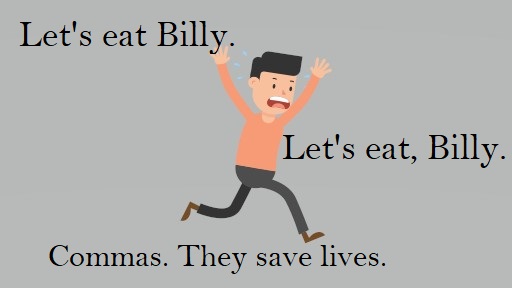
Image courtesy of Videoplasty.com
If you said that "Let's eat, Billy" is an example of direct speech, you are correct. "Billy" is being told that it is time to eat by the speaker/writer, but without the comma you leave Billy wondering if he is about to be grilled or fried.
Place names
Commas are also an important part of writing certain place names. Knowing when to include commas when writing place names will be necessary when writing reports. Commas are necessary when separating city names and states or regions as well as city names and countries.
Examples
- The ship sank off the coast of Galveston, Texas.
- The company operates out of Kristiansund, Norway.
- The fishing vessel Mako departed San Remo, Victoria.
Exercise
Read the following report and correctly place commas where necessary.
At 2000 on 12 August 2017 the fishing vessel Mako departed San Remo Victoria bound for fishing grounds about 3 hours away. Once clear of Cape Woolamai Mako maintained a steady course (210°) and speed to the south-west. At the same time the container ship Glasgow Express was passing Cape Liptrap heading north-west. The ship was bound for Melbourne Victoria and was maintaining a steady course (299°) and speed. From about 2030 the vessels were on a collision course.
No avoiding action was taken by either vessel and at about 2246 they collided.
The ATSB (Australian Transport Safety Bureau) found that a proper lookout by ‘all available means’ was not being maintained on either vessel.
Glasgow Express’s bridge team saw and monitored Mako visually from about 2200. However a full appraisal of the situation using other instruments or means available on the bridge (such as radar) was not done. As a consequence the situation was misinterpreted and the risk of collision was not identified. Therefore no avoiding action was taken.
Prior to handing over the watch at 2230 Mako’s watchkeeper identified Glasgow Express by radar and visually. However the information was misinterpreted and it was concluded that the Glasgow Express was passing clear ahead of the fishing boat and no avoiding action was taken. Then after taking the watch Mako’s second watchkeeper did not see the Glasgow Express until moments before the collision.
In addition Mako was under way with all external lights on. This made the vessel more easily seen but reduced the ability for Glasgow Express’s bridge team to accurately visually appraise the situation. The bright lights also reduced Mako’s watchkeeper’s night vision and ability to distinguish features beyond the glare of the lights.
The ATSB also noted that Mako similar to other fishing vessels of this design had a large fishing net winch drum mounted on deck forward of the wheelhouse. This winch drum restricts forward vision and may limit the ability to maintain a proper lookout unless accounted for in on-board procedures and training.
Conjunctions and transition words
Many of the texts and reports you will be writing in English will require you to use a more advanced form of the language than you have possibly done earlier. This means that you will have to present and discuss many ideas in one text. In order to do this, you will have to use conjunctions and transition words. Conjunctions and transition words allow the writer to reinforce ideas with additional information, present alternatives in a discussion, give conditions, emphasize an idea, give examples, present cause and effect, and describe a chronological sequence of events.
Even if you are not familiar with the terms conjunction or transition words, you have more than likely used them. Conjunctions do exactly what their name says- conjoin ideas. Some of the most common conjunctions are known as coordinating conjunctions, and are easily remembered through the following acronym:
| F or | The rescue was a success, for all passengers were present on land. For introduces phrases of explanation, much like the transition word because. |
| A nd | Oil tankers are subject to special regulations, and they must have a double bottom. And adds ideas. |
| N or | The Captain was not allowed to work on the ship nor was he allowed to sail for the company again Nor adds ideas in a negative sentence. |
| B ut | Mooring operations are difficult, but they can be managed with good procedures. But connects contrasting ideas. |
| O r | There are guidelines instructing when heavy fuel oil or diesel fuel should be used. Or gives alternatives. |
| Y et | Heavy weather had begun, yet the crew continued their work on deck. Yet functions much the same as nevertheless. Both present a contrast or an exception to the other statement it joins. |
| S o | Many ships were entering the canal, so the supertanker was forced to wait. So shows consequence. |
You may have noticed that only some of the sentences above have commas. This is because a comma is necessary only when joining complete sentences together. A complete sentence requires both a subject and a verb.
Example:
The First Mate attempted contact with the oncoming vessel. The oncoming vessel responded over the VHF.
Both of the sentences above work well on their own. However, it is perfectly acceptable to join them together.
The First Mate attempted contact with the oncoming vessel, and the oncoming vessel responded over the VHF.
If a sentence is incomplete, it is called a phrase. Joining a phrase to a complete sentence does not require a comma because the phrase cannot function alone.
Example:
The Bosun broke his arm. Was sent to shore.
Was sent to shore is a phrase because it is without a subject (who or what was sent to shore?) and is considered incorrect if left as it is. It can either be made into a complete sentence:
The Bosun was sent to shore.
Or it can join the sentence that came before it:
The Bosun broke his arm and was sent to shore.
As you can see above, a comma is not used.
You are familiar enough with the English language to know that there are many different ways to say the exact same thing. Having a broad vocabulary and the ability to pick from a variety of words can add life to your writing and make it more interesting for the reader. One way to do this is through the use of transition words and phrases. Transition words and phrases have the same function as FANBOYS, but some of the words and phrases can give the statement they are used with a different meaning.
The chart below gives some examples of common transition words and conjunctions along with when they are used.
| Purpose | Example words and phrases |
|---|---|
| Adding ideas | Additionally, in addition, furthermore, moreover, too, as well as, and |
| Putting ideas in a sequence or chronological order | Firstly, secondly, thirdly, prior to, meanwhile, during, after, later, till, at the present time, to begin with, as soon as, as long as, next when, before, whenever, eventually, by the time, whenever, instantly, immediately, quickly, occasionally, presently, suddenly, finally, afterwards |
| Emphasize and support with examples | Such as, namely, with attention to, even, indeed, in fact, of course, notably, for example, for instance, to clarify, in particular, usually |
| Consequence | As a result, therefore, so, as a consequence, in that case, because, consequently, for this reason, accordingly, because, which |
| Opposition or contradiction | In contrast, in spite of, on the contrary, on the other hand, even so, though, nevertheless, nonetheless, conversely, although, however, in reality, although this may be true, despite |
| Conclusions | On the whole, to conclude, in conclusion, to sum up, in brief, thus |
Comma use can be tricky when using transition words and phrases, but there are some general rules that can help you remember when and where you should use a comma. Check out chapter x for more information on comma use.
- If you start a sentence with a transition word or phrase, a comma is necessary.
The ship arrived at port before schedule. However, the cargo was not ready for loading.
- A comma is not needed when connecting two phrases (incomplete sentences) with a transition word or phrase.
The crew was prepared in spite of the delays.
Exercise
1. Identify the conjunctions and transition words and phrases in the following incident report taken from The United States National Transportation Safety Board.
Edited:
https://www.ntsb.gov/investigations/AccidentReports/Pages/MAB1808.asp
2. Re-write the following sentences using transitions words and phrases.
a. Engine breakdowns can be expensive. Proper maintenance routines are important.
b. The AB was gravely injured. He had followed the correct mooring procedures.
c. Vessels that are under way in heavily trafficked fairways must be careful. SOLAS and COLREGs have strict requirements about lookouts in these situations.
d. Paperwork and documentation are a major part of an officer's daily work. There will be less time for other important jobs and responsibilities.
e. There are many regulations regarding passenger safety on cruise ships. All passengers must undergo a muster drill within 24 hours after their embarkation.
Edited.
Source: https://www.atsb.gov.au/publications/investigation_reports/2017/mair/333-mo-2017-007/

